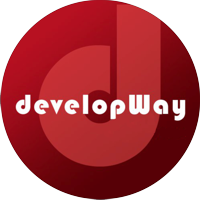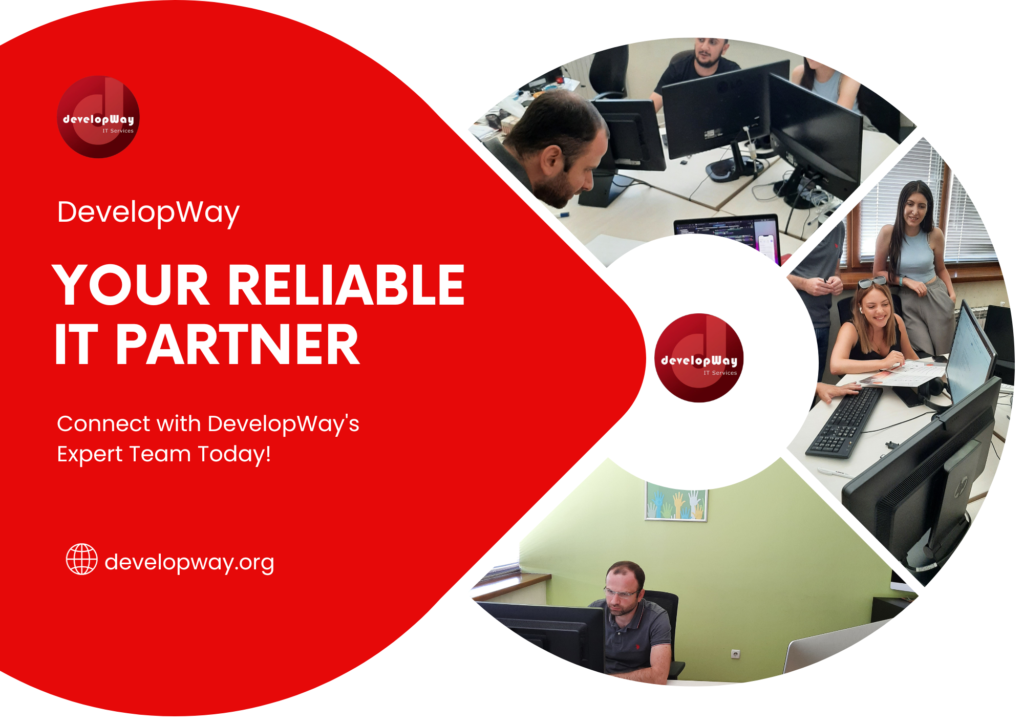
Unraveling the Mystery of Software Effort Estimation
Understanding the Basics: What is Software Effort Estimation
In today’s fast-paced business world, accurate software effort estimation plays a crucial role in the success of software development projects. Without proper estimation, projects can face delays, cost overruns, and even failure. That’s why it’s essential for businesses to understand the basics of software effort estimation and its importance in software development.
In this article, we will unravel the mystery behind software effort estimation and explore why accurate estimation matters in software development. We will dive into the best practices and strategies that can help businesses improve their estimation processes and achieve successful project outcomes. So whether you’re a decision-maker in a business, organization, or an individual seeking software development solutions, this article is for you.
Why Accurate Effort Estimation Matters in Software Development
Accurate effort estimation is a crucial aspect of software development that cannot be underestimated. It plays a pivotal role in project planning and management, facilitating decision-making and resource allocation. By providing realistic timelines and cost projections, developers can ensure successful project completion within the allocated budget. Furthermore, accurate effort estimation empowers effective project tracking and monitoring, allowing stakeholders to identify and address any potential delays or issues as early as possible. In short, precise effort estimation is the cornerstone of efficient software development, ensuring transparency, accountability, and ultimately, customer satisfaction.
The Evolution of Estimation Techniques in Software Engineering
In software engineering, the quest for accurate estimation techniques has witnessed significant developments over time. The evolution of these techniques has been driven by the ever-changing and fast-paced nature of the industry, where adaptability and agility are paramount. The need to estimate effort accurately has become crucial to ensure successful project planning, resource allocation, and timely deliveries. As a result, software development teams continually explore new methods and strategies to refine their estimation processes, aiming to align them with the demands of the modern software development landscape.
Agile Effort Estimation: Adapting to Fast-Paced Environments
One approach that has gained considerable popularity in recent years is Agile Effort Estimation. Agile methodologies have revolutionized the software development industry by emphasizing collaboration, adaptability, and iterative delivery. Unlike traditional waterfall approaches, Agile frameworks acknowledge the inherent uncertainty and complexity of software projects, especially in fast-paced environments. As a result, they recognize the importance of estimation techniques that can adapt to changing requirements, evolving stakeholder expectations, and dynamic market conditions.
Agile Effort Estimation leverages the principles of Agile methodologies to enable teams to estimate effort more effectively. By adopting iterative development cycles and embracing frequent feedback loops, Agile enables continuous learning and adjustment throughout the project lifecycle. This approach allows development teams to break down work into smaller, manageable units, commonly known as user stories or features. Each user story represents a distinct functionality or requirement and carries a relative effort estimation.
Estimation in Different Project Management Frameworks
Breaking Down the Work: Using Work Breakdown Structure
A fundamental aspect of project management involves breaking down the work into manageable tasks and activities. This is where a Work Breakdown Structure (WBS) comes into play. A WBS provides a hierarchical decomposition of the project scope, allowing project managers to estimate the effort, resources, and time required for each component of the project. By systematically disassembling the project into smaller, more manageable pieces, project managers can make more accurate estimates and allocate resources accordingly. The WBS serves as a comprehensive framework that enables project teams to identify dependencies, prioritize tasks, and ensure a smooth workflow. Whether you follow a traditional waterfall approach or an agile methodology, incorporating the use of a WBS can greatly enhance the estimation process and contribute to the overall success of the project.

Story Points: Agile Tools for Estimation
For projects managed under an agile framework, story points have emerged as a popular and effective tool for estimation. Unlike traditional methods, which rely on specific time-based estimations, story points assign relative values to tasks based on their complexity, risks, and effort required. This approach allows project teams to focus on the relative comparison of tasks, rather than trying to predict precise durations. As the project progresses, the team gains a better understanding of their velocity, which refers to the number of story points they can complete within a specific time frame. This information is then used to forecast how much work can be accomplished in each subsequent sprint or iteration. By utilizing story points, agile project teams can adapt to changing requirements and make more accurate estimations in a collaborative and iterative manner.
Adapting Estimation Techniques for Diverse Project Types
Not all projects fit neatly into a single management framework, and the estimation process must be adaptable to various project types. Different domains, industries, or client preferences may require unique approaches to estimating project work. For instance, software development projects may employ techniques such as function point analysis or use case estimations, whereas construction projects may rely on parametric estimating or historical data from similar projects. Additionally, factors like project size, complexity, and resource availability also necessitate the adaptation of estimation techniques. Project managers must be knowledgeable about a range of estimation methods and be able to tailor them to suit the specific needs of each project. By carefully defining and selecting the appropriate estimation techniques, project teams can increase the accuracy of their estimates and ensure successful project delivery.
Your Software Development Estimation Steps
1. Requirement Gathering:
The first step in software development estimation is to gather complete and detailed requirements from the client or project stakeholders. This involves understanding their needs, expectations, and desired functionalities of the software. By having a clear understanding of what needs to be developed, the estimation process becomes more accurate.
2. Breakdown of Tasks:
Once the requirements are gathered, the next step is to break down the overall project into smaller and manageable tasks. These can be categorized into different modules, features, or components of the software. Breaking down the project helps in estimating each task individually, resulting in a more precise estimation.
3. Prioritization and Dependencies:
After breaking down the tasks, prioritization is essential as it helps in determining which tasks are critical and need to be completed first. Additionally, identifying dependencies between tasks is crucial as some tasks may be dependent on others. Understanding these dependencies helps in creating a more realistic and time-bound estimation.
4. Effort Estimation:
Once the tasks are defined, estimating the effort required for each task is the next step. Effort estimation involves determining the amount of time and resources required to complete each task. This can be done by evaluating similar past projects, utilizing historical data, or consulting with experienced software developers.
5. Risk Assessment:
Software development projects often encounter risks and uncertainties that can impact the overall estimation. Therefore, conducting a risk assessment is crucial to identify potential risks, assess their impact on the estimation, and devise strategies to mitigate them. Incorporating risk factors into the estimation process ensures a more realistic and reliable project timeline.
6. Review and Refinement:
Before finalizing the estimation, it is essential to review and refine the estimations made for each task. This involves revisiting the breakdown, effort estimations, and risk assessment to identify any discrepancies or areas that require adjustment. Constantly reviewing and refining the estimation ensures accuracy and increases the chances of successful project completion.
By following these software development estimation steps, organizations can improve the accuracy of their estimations and enhance project planning and execution. Agile development methodologies, such as Scrum, can be utilized in conjunction with these steps to further optimize the estimation process and ensure continuous improvement throughout the software development lifecycle.
Navigating Challenges in Software Effort Estimation
Common Pitfalls and How to Avoid Them
Effort estimation in software development projects is fraught with challenges that can lead to costly delays and inaccurate predictions. Avoiding common pitfalls is crucial to ensure successful project planning and execution.
One of the most common pitfalls in software effort estimation is over-optimism. Development teams often underestimate the actual time and effort required to complete a project due to a tendency to focus solely on best-case scenarios. To avoid this pitfall, it is important to gather accurate historical data and use it as a basis for estimation, taking into account the complexities and potential risks involved in each project.
Another common pitfall is the lack of clear scope definition. When requirements are ambiguous or constantly changing, it becomes difficult to accurately estimate the effort required. It is essential to invest time in clearly defining and documenting project requirements upfront, involving stakeholders and subject matter experts to identify potential challenges and risks. Additionally, regularly reviewing and updating the scope throughout the project’s lifecycle is crucial to keep the estimation aligned with the evolving requirements.
Estimating effort solely based on expert judgment is yet another pitfall that can be misleading. While expertise plays a vital role in estimation, relying solely on subjective opinions can introduce biases and inconsistencies. To mitigate this pitfall, it is recommended to leverage historical data, industry benchmarks, and estimation techniques such as parametric models or function point analysis.
These approaches provide a more objective basis for estimation and help in achieving more accurate predictions.
Balancing Time, Cost, and Quality: A Triangular Perspective
Effort estimation in software development is not limited to time estimation alone. It is essential to consider the interplay between time, cost, and quality to ensure project success. This triangular perspective allows project managers to make informed decisions on resource allocation, prioritization, and trade-offs.
Time estimation involves determining the duration required to complete a project or a specific task. It is crucial to consider various factors such as the complexity of requirements, available resources, and potential risks. Accurate time estimation helps in setting realistic deadlines, avoiding unrealistic expectations, and ensuring proper project planning.
Cost estimation complements time estimation by providing valuable insights into the financial resources required for the project. Depending on the project’s nature, costs can include personnel expenses, hardware and software acquisitions, overheads, and potential risks. Balancing time and cost estimation helps in optimizing resource allocation and justifying project investments.

Lastly, quality estimation is equally important as time and cost estimation. Quality reflects the adherence to specifications, fulfillment of stakeholder expectations, and overall satisfaction. Estimating quality involves considering factors such as the project’s complexity, potential risks to quality, and the need for thorough testing and review processes. Balancing time, cost, and quality ensures that project deliverables meet the required standards and avoid any compromise on quality to meet aggressive timelines or cost constraints.
Software effort estimation requires awareness of common pitfalls and a triangular perspective that balances time, cost, and quality. Combining historical data, accurate scope definition, and objective estimation techniques can help avoid over-optimism, scope creep, and subjective biases. Additionally, time estimation, cost estimation, and quality estimation should be considered holistically to make informed decisions and ensure successful project planning and execution.
Leveraging Historical Data for Enhanced Accuracy
Historical data plays a pivotal role in estimation processes. It serves as a valuable resource that provides a comprehensive snapshot of past events, helping organizations make informed decisions and predictions. By carefully analyzing historical data, organizations can identify recurring patterns, correlations, and underlying factors that influence outcomes. This knowledge empowers them to recognize potential risks and opportunities, allowing for more accurate estimations.
Moreover, historical data enables organizations to evaluate the effectiveness of previous strategies and methods employed. By examining the outcomes of past endeavors, organizations can assess their performance and identify areas for improvement. This iterative learning process facilitates the development of more refined estimation techniques over time.
Software Scope Estimation: Defining What's In and Out
In the realm of software development, estimating the scope of a project is critical for its success. Accurately identifying what is within the scope of the project and what falls outside of it is essential to determine the effort required, allocate resources efficiently, and set realistic expectations with stakeholders.
The Importance of Clear Scope Definition in Effort Estimation
Clear and well-defined scope is the foundation upon which the entire software development process rests. It serves as a roadmap, guiding the team through various stages of the project and ensuring everyone is aligned towards a common goal. Without a well-defined scope, efforts may be scattered, priorities may be jumbled, and confusion may reign supreme.
Effort estimation plays an integral role in project planning and resource allocation. A comprehensive understanding of the scope allows developers, project managers, and stakeholders to gauge the scale of work involved, anticipate challenges, and make informed decisions. It enables effective communication and the establishment of realistic timelines, ultimately contributing to the successful delivery of the software.
Techniques for Effective Software Scope Estimation
Accurately estimating the scope of a software project requires a systematic approach and the utilization of effective techniques. Here are a few techniques that can enhance the accuracy and reliability of software scope estimation:
1. Requirements Elicitation:
Thoroughly eliciting and documenting the project’s requirements is crucial to gauge the scope accurately. Engaging with stakeholders and involving end-users in the requirements gathering process aids in understanding the project’s objectives and scope better.
2. Work Breakdown Structure (WBS):
Creating a well-defined WBS enables the decomposition of high-level project objectives into smaller, manageable tasks. This hierarchical structure helps identify the different components within the scope and provides a framework for estimating effort and allocating resources.
3. Use Case Analysis:
Analyzing and defining use cases can assist in determining the system’s functional requirements and boundaries. By identifying specific scenarios and interactions, use case analysis aids in scoping the required functionality accurately.
4. Historical Data Analysis:
Utilizing historical data from similar past projects can be beneficial in estimating the scope. Analyzing the effort and resources consumed in previous projects that share similarities in terms of functionality, complexity, and technologies provides valuable insights into estimating the scope of a new project.
5. Continuous Feedback and Iteration:
Scope estimation is an ongoing process that evolves as the project progresses. Regularly seeking feedback from stakeholders, development teams, and subject matter experts enables refinement and adjustment of the scope estimation, ensuring that it remains aligned with evolving project requirements.
By implementing these techniques for software scope estimation, development teams can improve their ability to define what’s included within the project’s scope accurately. With a clear understanding of the scope, projects can be planned more effectively, resulting in improved resource allocation, better communication, and successful software delivery.
Conclusion: Mastering the Art of Software Effort Estimation
In conclusion, software effort estimation is a crucial aspect of project management and plays a significant role in ensuring the success of software projects. By accurately estimating the effort required for a project, teams can better plan and allocate resources, set realistic timelines, and avoid potential pitfalls that could derail the project.
Throughout this article, we have discussed several key factors that influence software effort estimation, including project size, complexity, team experience, and historical data. We have explored various estimation techniques, such as expert judgment, analogy-based estimation, and parametric estimation, highlighting their strengths and limitations.
The importance of effective estimation practices cannot be overstated. By incorporating these practices into their project management approaches, practitioners can enhance decision-making, improve communication within the team and with stakeholders, and increase the chances of project success.
To summarize the key takeaways, practitioners should:
- Understand the importance and impact of accurate effort estimation on project success.
- Apply appropriate estimation techniques based on the project’s characteristics and available information.
- Continuously refine and validate estimation models using historical data and feedback from previous projects.
- Collaborate and involve relevant stakeholders to ensure a comprehensive and accurate estimation process.
- Regularly monitor and update estimations throughout the project’s lifecycle to adapt to changing circumstances.
Moving forward, practitioners should focus on continuous improvement and learning, striving to enhance their estimation skills and knowledge. By gathering experiences and insights from previous projects, they can refine their estimation techniques, making them more accurate and reliable over time.
By mastering the art of software effort estimation, practitioners can ultimately increase the likelihood of delivering successful software projects, meeting client expectations, and building a reputation for excellence in the field. Effective estimation practices pave the way for improved project planning, resource allocation, and overall project management, contributing to the growth and success of software development endeavors.
Ready to Elevate Your Software Development Process? Connect with DevelopWay's Expert Team Today!
Discover the difference a decade of innovation can make. Our seasoned professionals are here to guide you through every step of your software development journey. Let’s transform your ideas into reality with precision and efficiency. Reach out now for a personalized consultation!



